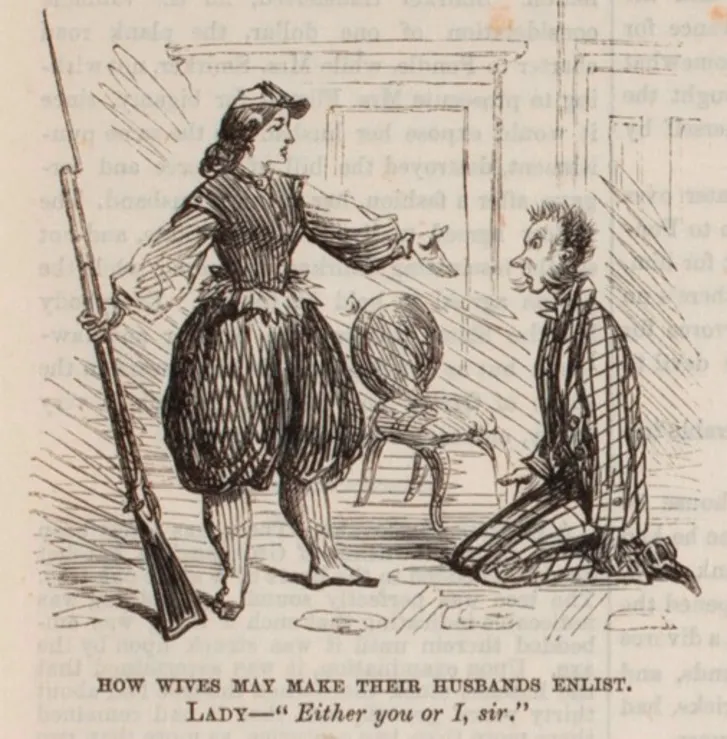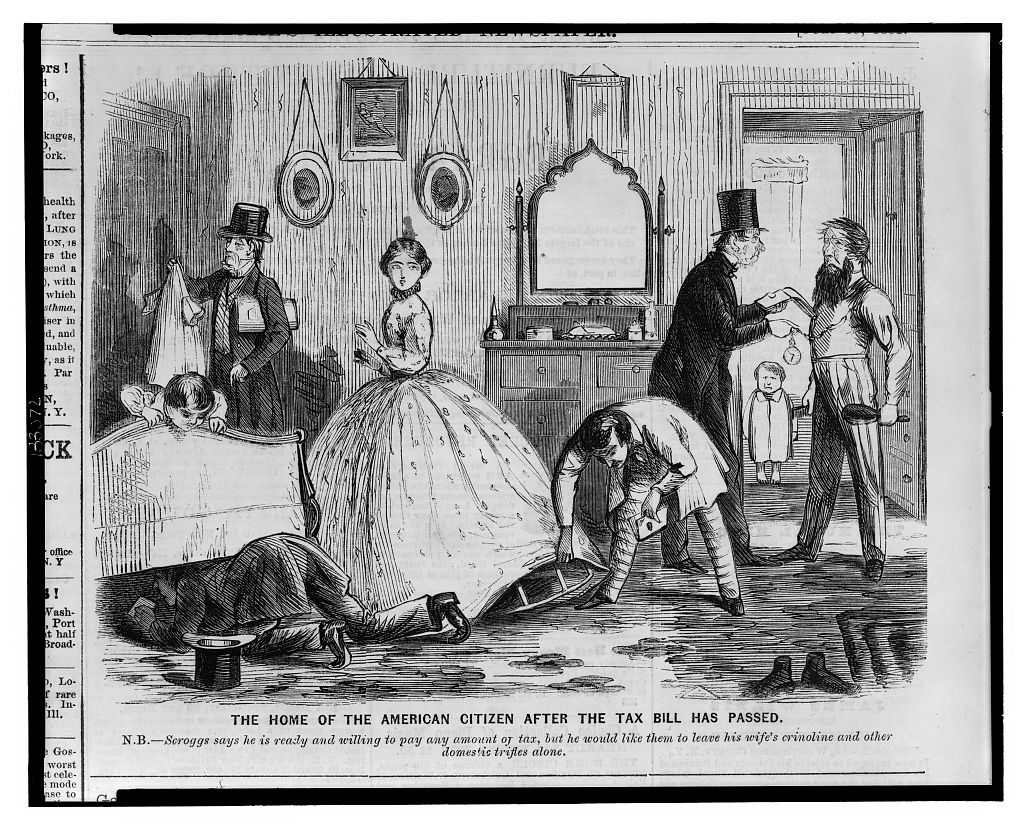
¨Frank Leslie’s 1863 cartoon “The Art of Inspiring Courage” shows a woman threatening to join the Union army if her husband doesn’t. ¨
- Karen Abbott

¨This illustration from 1862 shows how a woman’s clothes became increasingly suspect as vessels for hiding and transporting secrets, but also how men strove to protect women’s modesty, making it easier for female spies to hide secrets in their clothes.¨
- Library of Congress

¨Frank Leslie’s 1863 cartoon “The Art of Inspiring Courage” shows a woman threatening to join the Union army if her husband doesn’t. ¨
- Karen Abbott